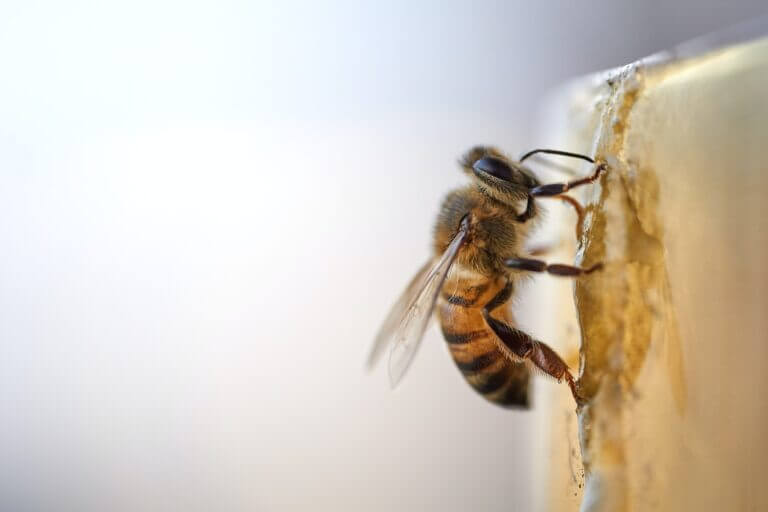Bees are an integral part of our ecosystem, responsible for pollinating a large variety of plants, including many food crops that sustain human life. But beyond their critical role, bees are fascinating creatures worthy of study in their own right. In this article, we will explore the basics of bee classification to understand where exactly these buzzing insects fit into the tree of life.
What is a Bee?
Bees belong to the insect order Hymenoptera, along with ants, wasps and sawflies. There are over 20,000 known species of bee in the world. They are found on every continent except Antarctica.
So what defines a bee?
Bees are distinguished from other insects by a few key characteristics:
- They feed exclusively on nectar and pollen.
- They have branched, hairy bodies designed to collect and transport pollen.
- They have specialized structures on their legs to groom and distribute pollen.
- They live cooperatively in colonies with a queen and workers (in the case of social bees).
- They provide and protect their larvae with individual nest cells.
This unique combination of traits sets bees apart from even their close relatives like wasps and ants within the expansive order Hymenoptera.
Why Are Bees Important?
It’s hard to overstate the importance of bees to natural ecosystems as well as human agriculture. Here’s why we should appreciate and protect bees:
- Pollination. Bees play a vital role by pollinating wild flowering plants and up to 75% of leading global food crops. Their work is necessary for plants to produce fruits, nuts and seeds.
- Biodiversity. The interdependence between bees and flowering plant species promotes cross-pollination and biodiversity critical for ecological balance.
- Economic value. Bee pollination adds an estimated $235 to $577 billion in value to global crop production annually.
- Food production. Around one-third of the food that we eat relies on bee pollination, including apples, berries, almonds, and squashes.
Clearly, protecting bee populations through conservation efforts should be a top priority. Understanding the classification and diversity of bees is an important step toward that goal.
Classification of Bees
Bees belong to the large order Hymenoptera, along with ants, wasps and sawflies. Here is a breakdown of the taxonomic classification of bees from broadest to most specific:
Kingdom: Animalia
As insects, bees are members of the kingdom Animalia. All animals fall into this kingdom.
Phylum: Arthropoda
Arthropods are invertebrates with external skeletons, segmented bodies and jointed appendages. Insects, spiders and crustaceans are all arthropods.
Class: Insecta
Insects have three-part bodies, six legs and wings (in some adult stages). All bees fall under the insect class.
Order: Hymenoptera
The order Hymenoptera contains over 150,000 species including bees, ants, wasps and sawflies. They share a common pupal stage and modified ovipositor (egg-laying organ).
Family: Apidae
The family Apidae encompasses all true bees, including honey bees, bumblebees, carpenter bees and stingless bees. There are over 5,700 species in this family.
Clade: Anthophila
Anthophila is a clade containing all of the bees within the Apidae family. The name means “flower lover” in Greek, referring to the dependence of bees on flowering plants.
This classification covers the approximate 20,000 bee species on the planet. But there is an immense diversity of bees within the family Apidae and clade Anthophila. Let’s look closer at some of the major types.
Types of Bees
While sharing common traits, the thousands of bee species vary greatly in size, color, habitat and social structure. Bee types fall into two broad categories: social bees and solitary bees.
Social Bees
Social bees live cooperatively in colonies with organized labor divisions between the queen and workers. Among the most well-known social bee species are:
Honey Bees
Most recognized for producing honey, honey bees (Apis mellifera) form hives of up to 60,000 workers centered around one reproductive queen. They communicate via complex dances.
Bumblebees
Large and furry, bumblebees (Bombus) nest underground in small colonies of up to 200 bees. They are vital native plant pollinators.
Stingless Bees
Stingless bees include around 500 tropical species, such as the Melipona bee. They produce honey and live in colonies of up to thousands.
Solitary Bees
The majority of bees are solitary nesters that live and work alone. Examples include:
Mason Bees
Mason bees use mud or chewed leaves to construct individual nest cells in cavities or tubes. For example, the blue orchard mason bee (Osmia lignaria) is an excellent fruit tree pollinator.
Carpenter Bees
Carpenter bees chew into wood, bark or bamboo to form protected nest galleries. They can become pests, so managing populations is needed.
Leafcutter Bees
Leafcutter bees slice off circular leaf pieces to build protected egg chambers in cavities. The alkali bee (Nomia melanderi) is a specialist alfalfa pollinator.
Sweat Bees
Tiny sweat bees earned their common name from their attraction to perspiration. Most are solitary ground nesters and mild-mannered pollinators.
Conclusion: The Importance of Bee Conservation
As we have explored, bees comprise a diverse array of over 20,000 species globally. Their taxonomic classification situates them within the large order Hymenoptera in the family Apidae and clade Anthophila. While varying greatly in characteristics and habits, all bees play essential roles as pollinators in natural and agricultural ecosystems.
In recent decades, bee populations have declined significantly due to habitat loss, parasites, pesticides and climate change. Protecting bees through conservation and management practices is vital. Understanding the broad diversity and classification of bees provides context and background to guide these efforts. Promoting bee health preserves biodiversity, helps sustain global food supplies and maintains ecological balance. Bees deserve our utmost appreciation and protection as some of the most amazing and influential creatures with whom we share our planet.






